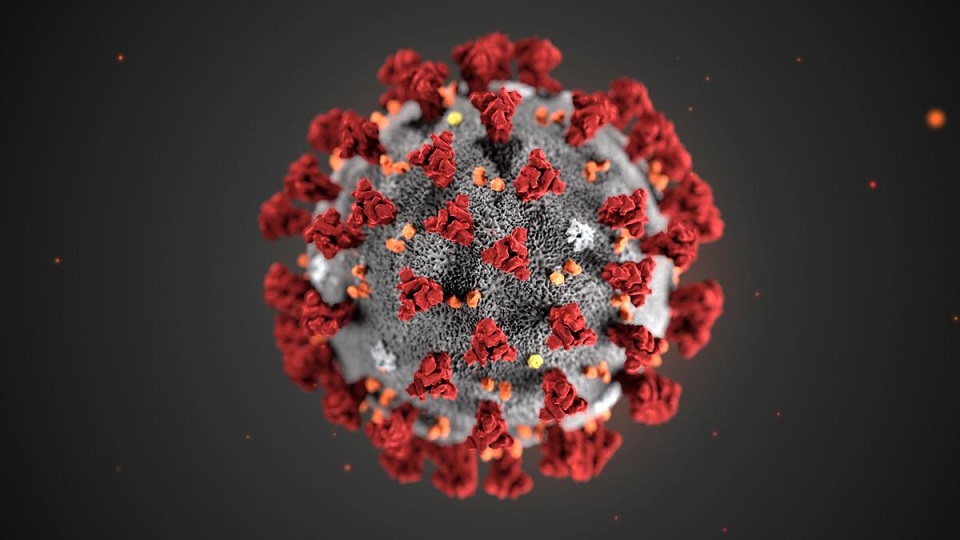
OR

CHINA, Jan 31: A new coronavirus that has killed 213 people in China is spreading to other countries, alarming health experts.
Here is some of what we know - and don’t know - about the virus:
The virus is believed to have originated late last year in a food market in the Chinese city of Wuhan that was illegally selling wildlife. Health experts think it may have originated in bats and then passed to humans, possibly via another species.
The World Health Organisation (WHO) was alerted to several cases of pneumonia in Wuhan at the end of December. Chinese authorities confirmed they had identified a new virus a week later.
The new virus, identified by scientists as 2019-nCoV, is a coronavirus, a family of viruses that include the common cold and more serious diseases such as Severe Acute Respiratory Syndrome (SARS).
Coronavirus infections have a wide range of symptoms, including fever, cough, shortness of breath, and breathing difficulties.
It is unclear how deadly the new virus is. Although severe cases can cause pneumonia and death, there may be many cases of milder disease going undetected. Many of those who have died had pre-existing medical conditions or were elderly, those with weakened immune systems.
The coronavirus can be transmitted from person to person, although it is not clear how easily that happens. Most cases are in people who have been in Wuhan, family members of those infected, or medical workers.
Transmission is most likely through close contact with an infected person via particles in the air from coughing or sneezing, or by someone touching an infected person or object with the virus on it and then touching their mouth, nose or eyes.
In order to reduce the likelihood of transmission, the WHO recommends that people frequently wash their hands, cover their mouth and nose when sneezing or coughing, and avoid close contact with those who are sick.
The U.S. Centres for Disease Control and Prevention says those who develop symptoms such as coughing and fever who have been in China in the last 14 days should call ahead to a healthcare professional to establish if they need to be tested.
There is no vaccine.
The vast majority of the almost 10,000 cases identified have been in China, mostly in and around Wuhan. The other countries with confirmed cases include Australia, Cambodia, Canada, France, Germany, India, Japan, Malaysia, Nepal, Sri Lanka, Singapore, Thailand, South Korea, the UAE, the United States, and Vietnam.
The WHO is looking closely at cases of person-to-person transmission outside of Wuhan, which would suggest that it may have the potential to spread further. There have been at least eight cases of human-to-human transmission in four countries outside China, including the United States, Germany and Japan.
The Chinese government has put Wuhan into virtual quarantine to try to stop the spread of the virus. A number of foreign governments, including the United States, have advised against travel to China and have begun flying their citizens out of Wuhan.
The WHO has not recommended curbs on travel or trade with China.
The new virus is a strain of coronavirus, like SARS, which killed nearly 800 people globally in 2002 and 2003.
Unlike SARS, which also originated in China, it is believed the new virus can spread during the incubation period of one to14 days, possibly before an infected person is showing symptoms.
The new virus does not appear to be as deadly as SARS, but there have been more cases overall.
You May Like This

Oil prices slide again as world runs low on storage capacity amid plunge in demand
MELBOURNE, April 28: Oil fell on Tuesday, adding to huge declines in the previous session, on worries about limited capacity to... Read More...

Suspension of domestic, int’l flights extended till May 15, Cabinet to decide on lockdown extension
KATHMANDU, April 25: A meeting of the high-level government committee for the prevention and control of coronavirus in Nepal has... Read More...

Germany's confirmed coronavirus cases rise by 2,237 to 145,694 - RKI
BERLIN, April 22: Germany’s confirmed coronavirus cases increased by 2,237 to 145,694, data from the Robert Koch Institute (RKI) for infectious... Read More...




Just In
- NEPSE loses 3.24 points, while daily turnover inclines to Rs 2.36 billion
- Pak Embassy awards scholarships to 180 Nepali students
- President Paudel approves mobilization of army personnel for by-elections security
- Bhajang and Ilam by-elections: 69 polling stations classified as ‘highly sensitive’
- Karnali CM Kandel secures vote of confidence
- National Youth Scientists Conference to be organized in Surkhet
- Rautahat traders call for extended night market hours amid summer heat
- Resignation of JSP minister rejected in Lumbini province















Leave A Comment